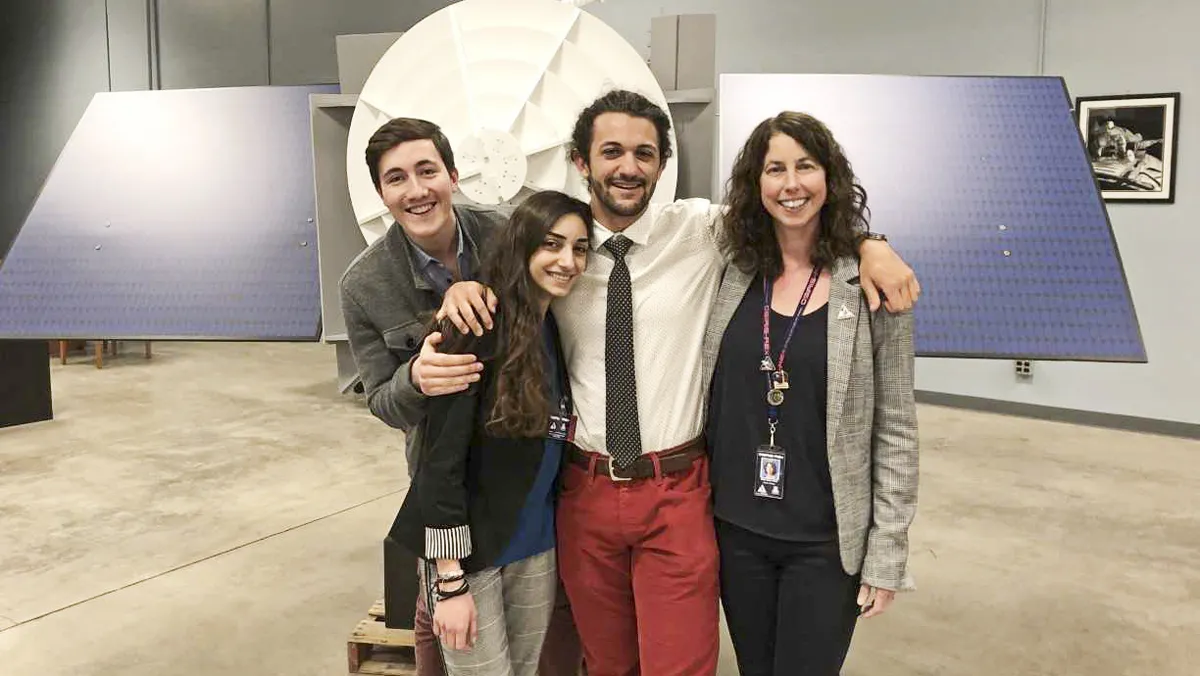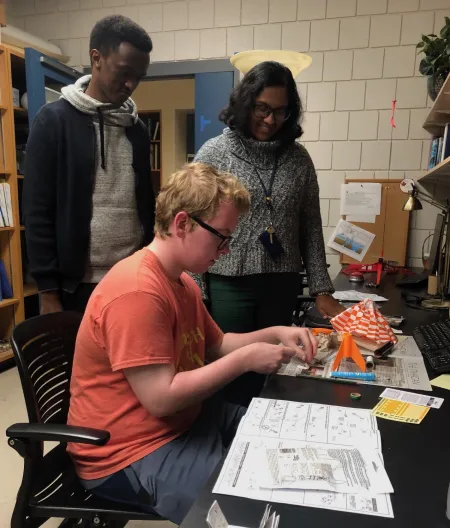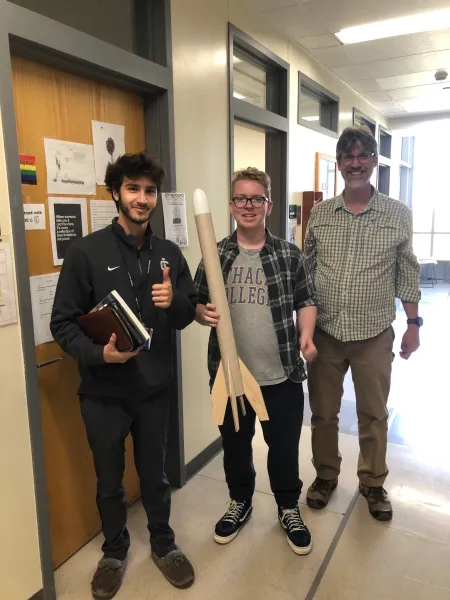Ithaca College students, are studying imaging and spectral techniques used in astronomy to study the properties, origins, and evolution of astronomical objects like asteroids, comets, stars, and planets.

From left, Robert Melikyan '20, Stavrini Tsangari '19, Salvatore Ferrone ’18 and Beth Ellen Clark Joseph, professor in the Department of Physics and Astronomy, have worked at NASA.

Current Projects

Science communication to the General public: astronomy and astrophysics
Luke Keller
Experiencing the unfolding of something larger than us is what I love about sharing astronomy with the general public. I experience those moments with each presentation, each group, each performance—discovering them again with my audience as if for the first time. An important theme woven through all of my science outreach and public speaking is communicating and inspiring a deep appreciation for the process of science and and how it enhances our aesthetic encounters with the natural world.
Students interested in science communication, science journalism, or work in science centers and museums learn how to describe the universe to anyone of any age.
Sonification of astrophysical spectra
Luke Keller
We are developing tools in Python that translate electromagnetic spectra into sounds; a process known as sonification. Sonification of data enables us to hear our astrophysical data. We are developing tools to enable audiences less familiar with light spectra and spectral analysis can appreciate the richness of these complex data; to enable blind and visually impaired scientists to experience the data sets, which are commonly presented as images and graphs; and we are investigating the possibility that using our sense of hearing, rather than our sense of sight, may in fact enable more thorough analysis of subtle features in the data.
NASA OSIRIS-REx Asteroid Color Photometry
Beth Ellen Clark Joseph
Using photometric models that describe the way light scatters off the surface of an airless body, we will study the color changes of the optical surface of asteroid 101955 Bennu, target of the OSIRIS-REx mission, that occurred due to the disturbance of the surface when the spacecraft touched down and sampled the rocks. We will seek to understand what causes color variations on one asteroid in order to investigate the compositional implications of the colors we observe for all asteroids in the solar system. For more information about the OSIRIS-REx mission and asteroid science, visit asteroidmission.org.
NASA OSIRIS-REx Asteroid Water Band Shape Shifting
Beth Ellen Clark Joseph
Using laboratory spectral data of water-bearing minerals such as those found on asteroid 101955 Bennu, target of the OSIRIS-REx mission, study the occurrence and causes of shape changes of the deep water band at 2.7 microns. The water band seems to be composed of overlapping gaussian-shaped reflected light absorptions, where each gaussian is attributed to different forms of water and hydroxyl molecules. The project before us will be to use laboratory simulations to investigate what causes 2.7-micron band shape shifts.